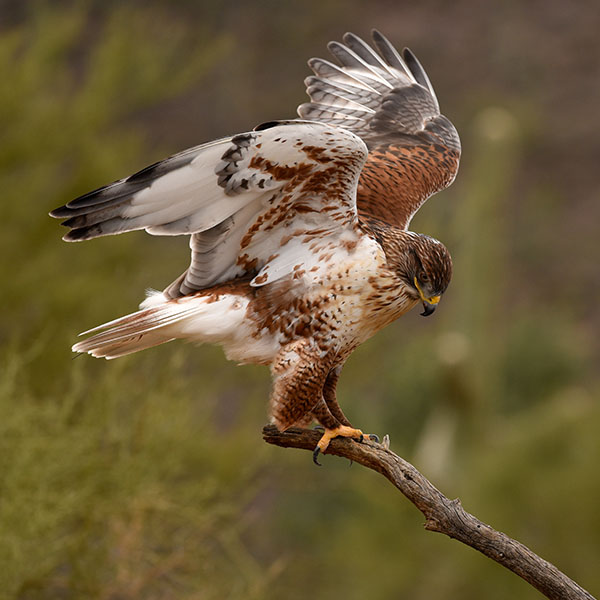The ferruginous hawk is the largest hawk species in
North America. Their name comes from the Latin word
“ferrum,” meaning iron, for the rust-colored patches
on their wings. Unlike most hawks, they have feathers extending all the way down their
legs. Because of their slow wing beats, proportions, and behavior, they are often mistaken
for eagles.
Because they depend on open grasslands to hunt, ferruginous hawks are impacted by the
cultivation of open land and the elimination of preferred prey species such as prairie dogs,
ground squirrels, and rabbits. This species is also affected by secondary rodenticide
poisoning, as many of the animals that they eat are considered pests and are targeted by
farmers. Although they have fairly specific habitat requirements, ferruginous hawks are
very flexible when it comes to nesting location, capable of raising young in trees, on
platforms, on cliffs, or on the ground. Before the near-disappearance of the American bison
from the West, ferruginous hawk nests were often built with bison bones and wool.
Ferruginous Hawk
Buteo regalis

Animal Ambassadors
Diet:
Small- to medium-sized mammals, especially jackrabbits, prairie dogs, and ground squirrels
Small- to medium-sized mammals, especially jackrabbits, prairie dogs, and ground squirrels
Range:
Western contiguous U.S. and northern Mexico
Western contiguous U.S. and northern Mexico
Lifespan:
5-15 years / 20-25 years
5-15 years / 20-25 years
Habitat:
Open prairie, high desert, and shrubland
Open prairie, high desert, and shrubland
Length / Wingspan:
4-5 ft
4-5 ft
Weight:
2-5 lbs
2-5 lbs
